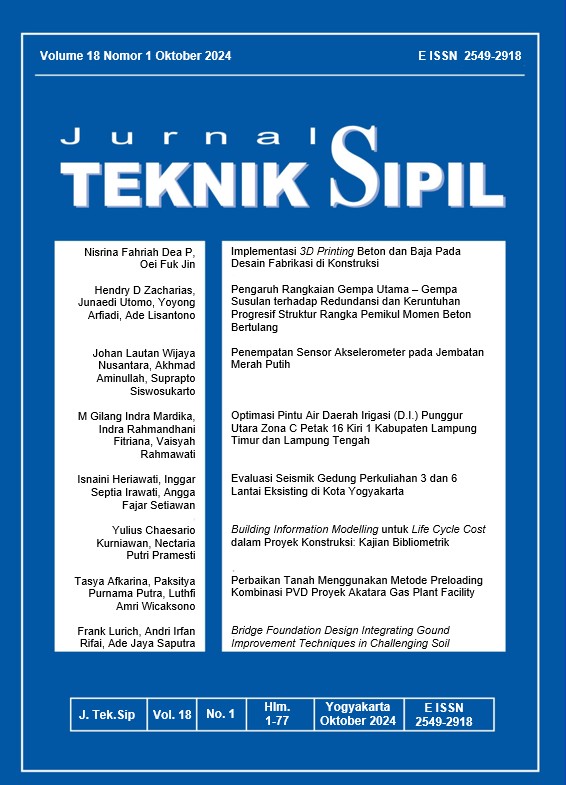BRIDGE FOUNDATION DESIGN INTEGRATING GROUND IMPROVEMENT TECHNIQUES IN CHALLENGING SOIL
DOI:
https://doi.org/10.24002/jts.v18i1.10313Abstract
This study investigates the optimal design of bridge foundations incorporating ground improvement techniques in challenging soil conditions, employing a case study methodology. Bridge foundations primarily serve to transfer forces applied by the bridge to the underlying soil, and ground improvement techniques enhance soil properties, particularly in complex environments. Challenging soil conditions pose substantial difficulties in designing and constructing bridge foundations, requiring engineers to employ specific methodologies to ensure stability and long-term resilience. These solutions are crucial in areas with weak or unstable soil incapable of supporting large structures like bridges. This study aims to conduct a thorough comparative analysis to evaluate the suitability of Controlled Modulus Columns (CMC) for a roadway project in north-central Java, where soil conditions present significant challenges. By collecting and analyzing secondary data from various sources, including literature, case studies, and empirical research, the study assesses ground improvement techniques' effectiveness, efficiency, and performance in similar soil and geotechnical conditions. The objective is to determine whether CMCs are the most beneficial approach for enhancing the stability and performance of the highway or if alternative methods, which require rapid installation and high load-bearing capacity while minimizing soil disruption, might be more appropriate. The study highlights that Deep Soil Mixing (DSM) offers advantages comparable to CMCs and has proven effective in different soil conditions. This research aims to provide valuable insights into selecting optimal ground improvement techniques for bridge foundations in challenging soil conditions, ensuring stability and performance while addressing project-specific requirements.
Downloads
Published
Issue
Section
License
Copyright (c) 2024 Jurnal Teknik Sipil

This work is licensed under a Creative Commons Attribution-NonCommercial-ShareAlike 4.0 International License.


